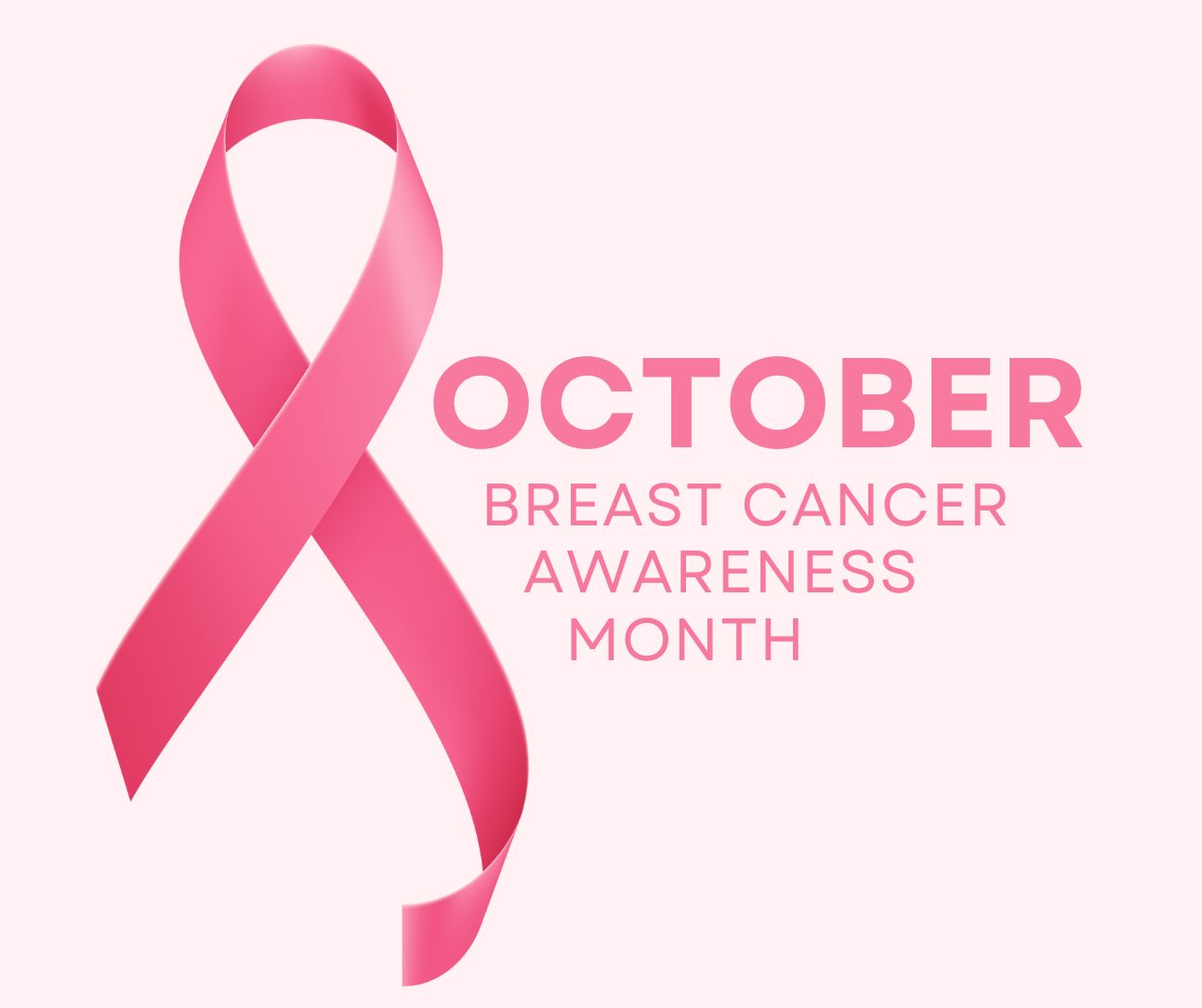
OCTOBER IS BREAST CANCER AWARENESS MONTH
October has become a month synonymous with Breast Cancer Awareness and seeing the pink ribbon on sports jerseys and events both locally and nationally to raise awareness in our country. Breast cancer is not solely a woman’s disease. Men too, can get diagnosed with breast cancer. According to the American Cancer Society, 1 in 8 women in the United States will be diagnosed with breast cancer in their lifetime. In 2023, an estimated 297,790 women and 2,800 men will be diagnosed with invasive breast cancer. Chances are, you know at least one person who has been personally affected by breast cancer. There are several types of breast cancer based on what cells they develop in an area of the breast tissue such as the milk duct or lobe. Inflammatory Breast Cancer (IBC) is a more aggressive and fast-growing breast cancer that can oftentimes be missed at first or misdiagnosed as a skin rash (with persistent itching) or eczema of the nipple and surrounding area and without a distinct tumor or lump present. Paget’s disease is a rare breast cancer that involves the skin of the nipple and areola and can also be misdiagnosed at first as a skin issue only. As a woman who gets yearly mammograms and has dealt with cancer being misdiagnosed and missed for years among family members in my own family, I want to stress how important it is to not ignore your symptoms. If you have a new skin issue on your breast that a dermatologist has treated and it persists, then ask for a skin biopsy and get a mammogram as soon as possible to rule out Paget’s disease and IBC.
You know your body best and if you notice subtle differences then go get checked out again until you have a conclusive answer. Sometimes it could be hormonal changes that time will resolve. Other times it can be from dietary issues such as too much caffeine which can cause breast cysts to become painful. Acute pain and redness is also a sign of IBC and should be examined by your doctor and double-checked with a mammogram and ultrasound. One year delay in getting your annual mammogram can make a huge difference in the staging of any cancer and the course of treatment and survival outcomes. The pandemic saw many women delaying their annual exams and since then there has been an uptick in the number of newly diagnosed women because of the delay in routine screenings. Most cases (60-70%) of breast cancer are in people who have no known risk factors while 30-40% have known risk factors such as a family history of breast cancer which is a genetic risk factor. Risk factors include genetic and environmental/lifestyle risk factors. Genetic risk factors include such things as gender, age, race, family history, personal health, menstrual/reproductive history, certain genome changes, and dense breast tissue. Environmental risk factors include physical activity level, poor diet, obesity, alcohol consumption, radiation to the chest area, and combined HRT or hormone replacement therapy. Take a personal inventory of these risk factors with you when you discuss your annual mammogram with your healthcare provider so that your doctor has a clear health history of you, and you can take the necessary steps to get the correct screenings or more advanced screenings such as a breast MRI if you fall under the high-risk factor group. Being informed and passing that information to your doctor is key to early detection and increased survival. {The National Breast Cancer Foundation website has a list of Free Resources and education guides and checklists available to the public. Visit the following site (https://www.nationalbreastcancer.org/educational-guides).}
